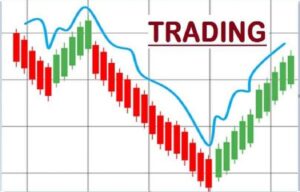The rise of Artificial Intelligence and machine learning in stock trading: What this means for UK traders

The UK’s stock trading landscape has undergone a profound transformation with the advent of Artificial Intelligence (AI) and Machine Learning (ML) technologies. These advanced algorithms have revolutionised how traders analyse data, identify patterns, and make investment decisions. Unlike traditional trading methods, which rely heavily on human intuition and analysis, AI and ML systems can process vast amounts of data at speeds unattainable by humans.
This article explores the impact of AI and ML on stock trading in the UK and delves into what this technological shift means for traders.
Algorithmic trading: The power of data-driven decisions
Algorithmic trading, driven by AI and ML, has become a cornerstone of modern stock markets. These algorithms use historical and real-time data to quickly identify patterns and execute trades. This has led to a surge in high-frequency trading in the UK, where large volumes of shares are bought and sold within fractions of a second. This rapid pace of trading has reshaped market dynamics, making it imperative for traders to adapt to this new reality.
AI-powered trading systems can sift through an immense amount of information from financial reports, news articles, social media, and more to make informed trading decisions. This data-driven approach can uncover hidden opportunities and mitigate risks, providing traders with a competitive edge in the fast-paced world of stock trading.
Machine learning in portfolio optimization: A data-centric approach
Portfolio optimization is a critical aspect of successful stock trading. Machine Learning techniques have proven invaluable in this arena. These algorithms can analyse historical market data to identify optimal asset allocations based on risk tolerance, expected returns, and other factors. In the UK, this means that traders such as Saxo Bank traders can construct portfolios that are diversified across different asset classes and fine-tuned to maximise returns given the prevailing market conditions.
ML models are capable of adapting to changing market environments. They can learn from new data and adjust portfolio allocations accordingly. This dynamic approach to portfolio management is precious in the face of evolving economic conditions, geopolitical events, and market trends. By leveraging ML in portfolio optimization, UK traders can potentially enhance the performance and resilience of their investment portfolios.
Sentiment analysis: Gauging market sentiment with AI
Understanding market sentiment is a crucial component of successful trading. AI-driven sentiment analysis tools scan many data sources, from news articles to social media feeds, to gauge the market’s mood. By analysing the tone and content of these sources, these systems can provide valuable insights into how traders and investors feel about specific stocks or the market as a whole.
In the UK, this technology allows traders to stay attuned to market sentiment in real time. For example, if there is a sudden surge in positive sentiment around a particular sector, it may signal an emerging opportunity. Conversely, a spike in negative sentiment could be an early warning of potential downside risks. By integrating sentiment analysis into their trading strategies, UK traders can make more informed decisions responding to the prevailing market mood.
Challenges and considerations for UK traders
While integrating AI and ML in stock trading offers significant advantages, it has challenges. Traders must be mindful of potential biases in algorithms and ensure they are appropriately calibrated. Additionally, the rapid pace of AI-driven trading requires robust risk management strategies to mitigate the potential for unforeseen market events.
Traders should know the need for ongoing learning and adaptation. Staying abreast of the latest AI and ML technology advancements is crucial to remain competitive in an increasingly tech-driven trading landscape. It’s imperative to balance leveraging AI’s power and maintaining a solid understanding of fundamental market dynamics.
Risk assessment and mitigation in AI-driven trading
With the integration of AI and ML in stock trading, a key consideration for UK traders revolves around risk assessment and mitigation. While these technologies offer powerful analytical capabilities, they are not immune to occasional errors or unforeseen market events. Traders must implement robust risk management strategies to safeguard their investments. This may include setting precise stop-loss levels, diversifying portfolios, and regularly monitoring algorithm performance.
Traders should be vigilant in assessing the potential biases inherent in AI models. Algorithms rely on historical data to make predictions, which means they may inadvertently perpetuate existing biases present in the data. UK traders must conduct thorough due diligence to ensure their AI systems are fair, transparent, and not inadvertently discriminating against specific groups or sectors.
All things considered
The rise of Artificial Intelligence and Machine Learning has ushered in a new era for stock trading in the UK. These technologies have reshaped how trading is conducted and empowered traders with unprecedented access to data-driven insights.
While challenges and considerations exist, the potential benefits of incorporating AI and ML into trading strategies are substantial. By embracing this technological revolution, UK traders can position themselves to thrive in an evolving and increasingly competitive market environment. It’s an exciting time for trading, as the marriage of human expertise with cutting-edge technology paves the way for a more dynamic and sophisticated approach to investing.







